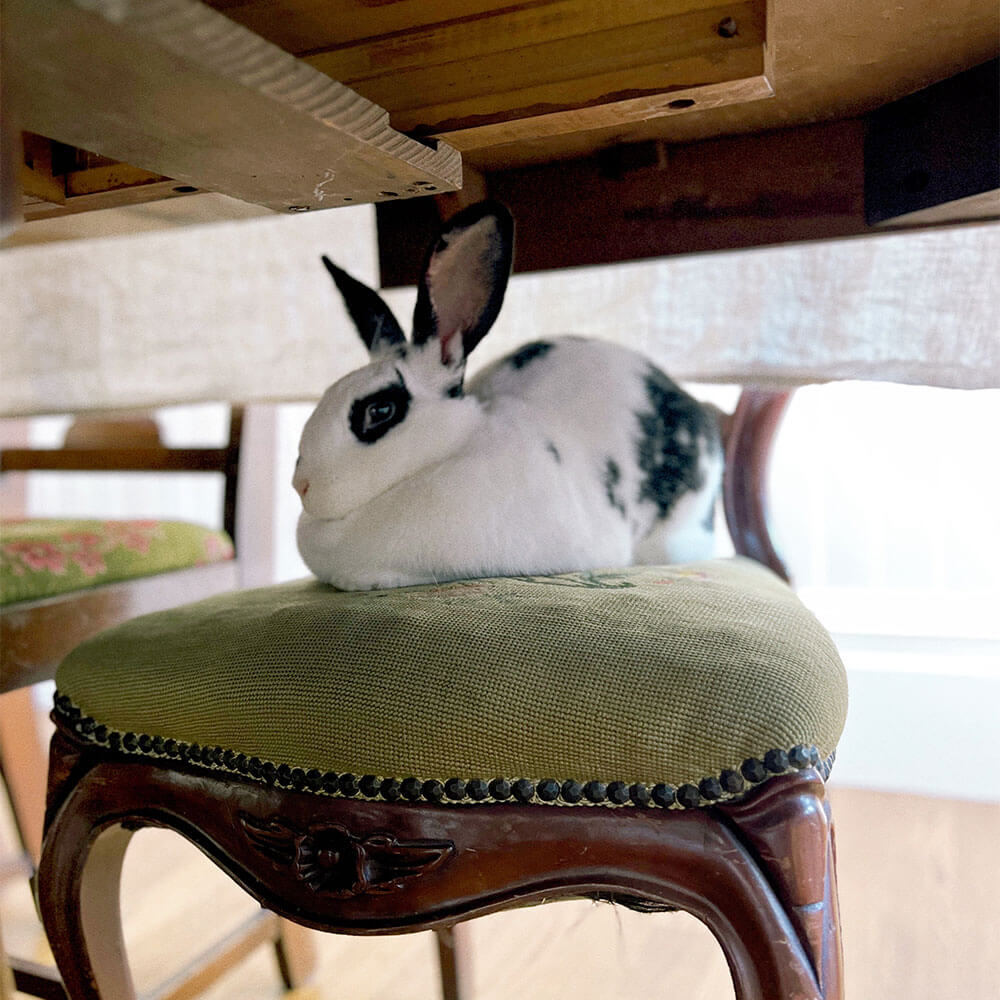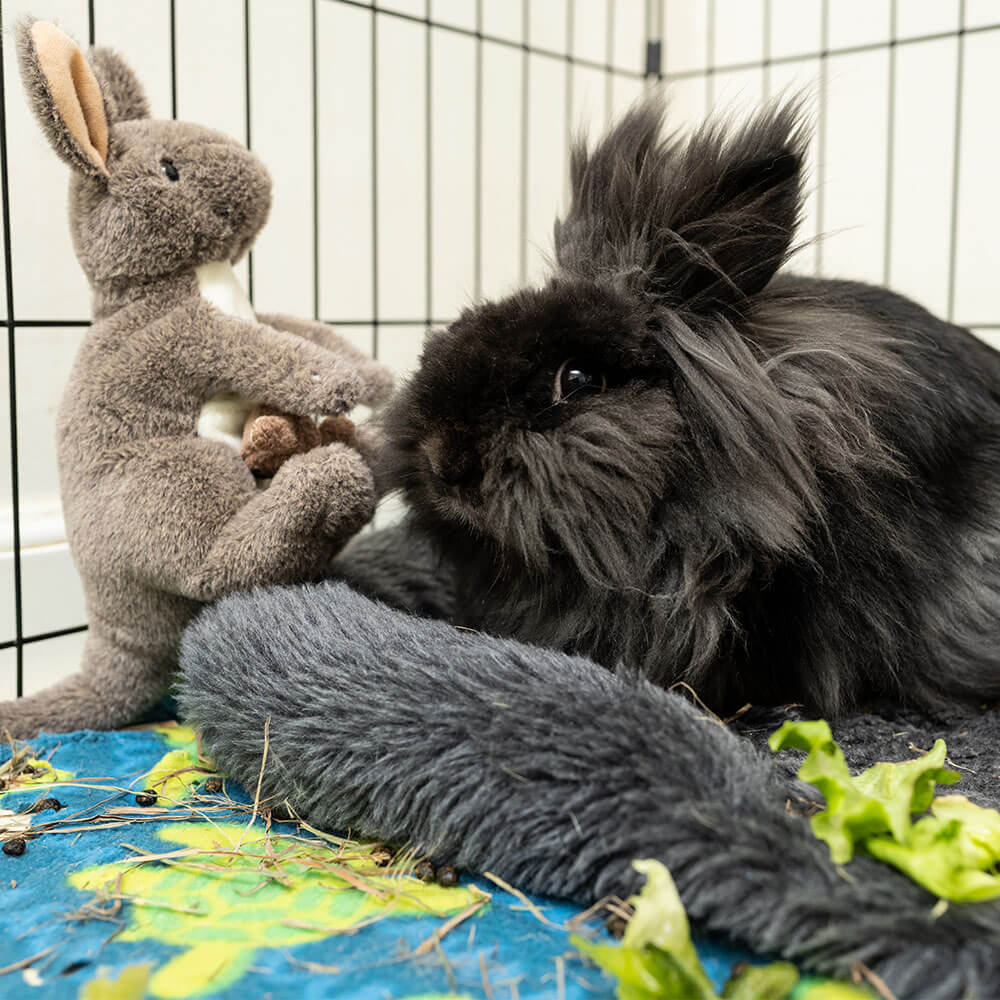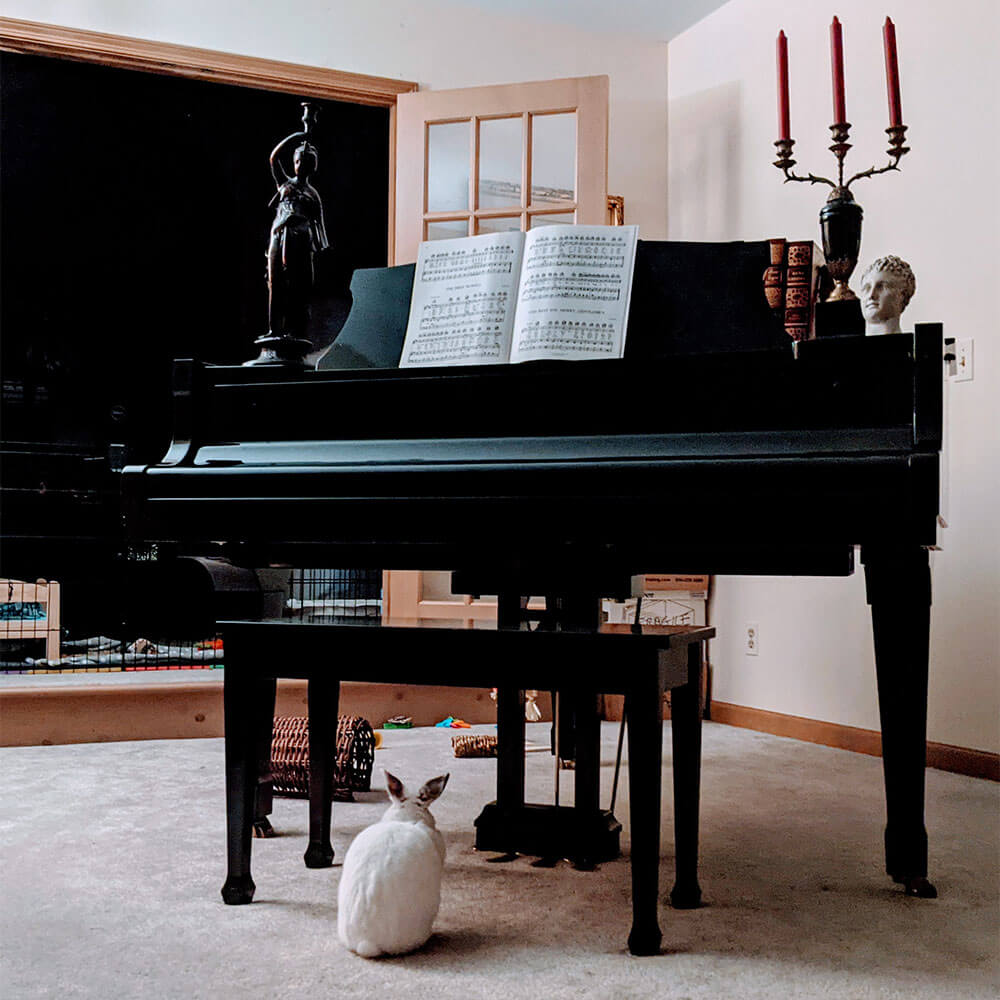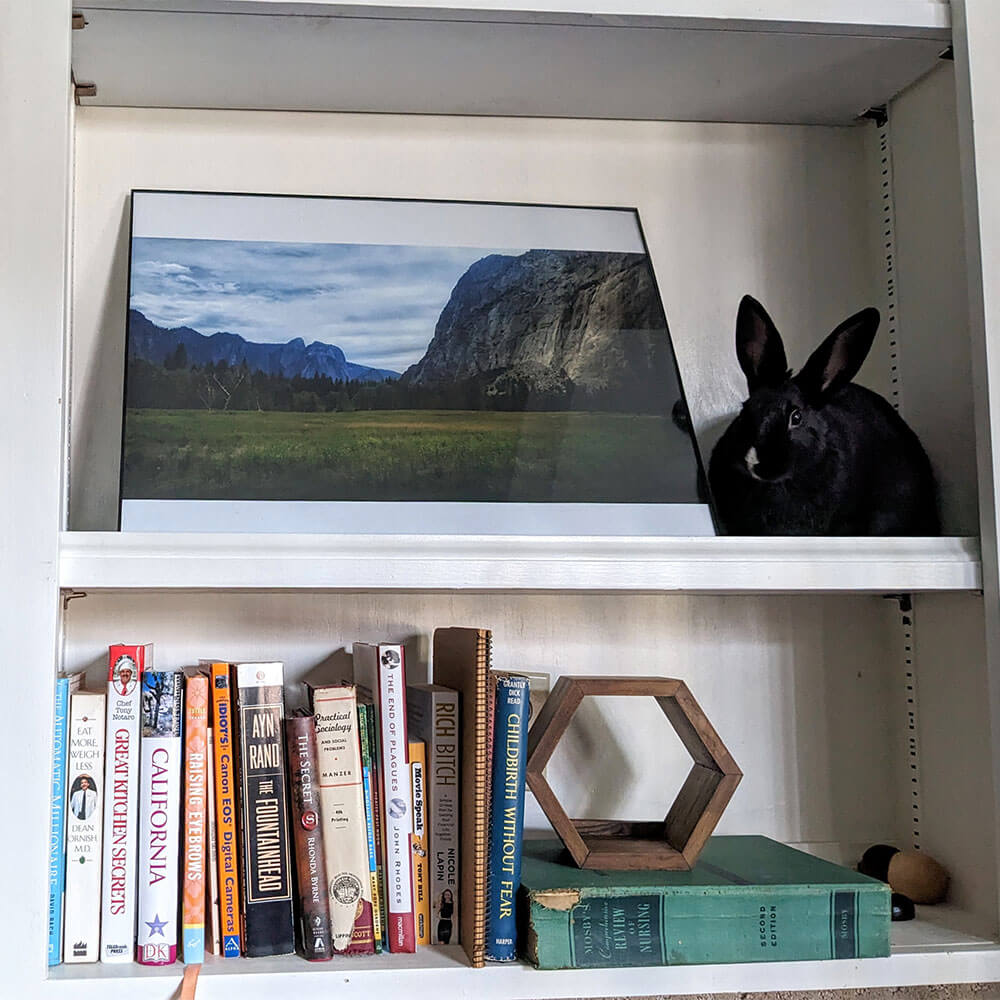Do(es) my rabbit(s) need a cage?
Your rabbit does not need a cage. However, an untrained rabbit probably should be kept in an enclosure (pen, roomy cage, room with the door closed) while you’re not home to supervise and at night when you sleep. House Rabbit Society encourages the use of an exercise pen (x-pen) over a cage. They usually provide far more space than a cage, can be made larger or smaller as needed, and are easy to move from place to place–which you and your rabbit may appreciate from time-to-time. Also, wire cage floors are dangerous for rabbit feet. Exercise pens have smooth floors and are easier to clean.
An untrained rabbit can get into a lot of mischief, so they should be kept in an enclosure while you’re not home to supervise and at night when you sleep. Rabbits are crepuscular, which means that generally they sleep during the day and during the night but are ready to play at dawn and at twilight. Be sure to let them out during the evening when you are home, and if possible, in the morning while you get ready for work.

What Size Housing is Best?
Bigger is better!
A rabbit’s home should be at least 4-6 times the size of your bunny when they are fully stretched out. The space should be even larger if they are confined for a large amount of the day.
Enclosure sizes also should be decided in conjunction with the amount of exercise time and space the rabbit has.
General guidelines for 1-2 rabbits who have an enclosure:
- Enclosure space: at least 8 square feet
- Exercise space: at least 24 square feet
- Exercise time: able to run and play at least 5 hours per day
Can My New Bunny Run Loose In The House?
A rabbit who is learning to use the litterbox needs to have limited running space while they learn where their litterbox is and what it is for. More space can be provided as your bunny shows they know where to “go.” By bunny proofing your home as well as learning what your individual rabbit’s more annoying habits (chewing books or baseboards, digging the carpet, climbing to the table top for that vase of flowers), you will better know how to protect the space you choose for your rabbit.
For instance, you may need to get in the habit of keeping closet doors closed or the office chair rolled up to the desk, or you might need to wrap your electrical cords in protection or keep them safely tucked behind furniture. These steps are essential to keeping your rabbit and your home safe. This may take some time, so do not rush giving your rabbit free reign.
However, once your rabbit is familiar with your home, once you know what your rabbit’s temptations are (are they an unrepentant chewer, digger, or climber?), and once your house has been fully bunny proofed, they may be able to have free run of a room or even your entire home, even when you’re not there.

How Do I Make My Rabbit(s) Space More Enjoyable?
A rabbit’s primary living space should be seen as their “homebase”–that special place where they can feel safe and secure. Make the space feel fun and secure, and they will enjoy being there, even when the door is open.
Keep it supplied with a litterbox, a hidey box for extra privacy and security, safe homemade or purchased toys, a soft rug or towel, and something for chewing like untreated wood or willow or another natural chew.
When it is bedtime or time for you to leave the house, a nice veggie or small treat can make entry to the enclosure more positive. You can cut openings in a cardboard box or purchase a variety of fun wooden and cardboard play structures available for your rabbit to climb and hide in. Stuff the boxes with the packing paper the boxes came in.
Like little kids, be sure to rotate their toys, playhouses and boxes, as rabbits do get bored. You can make your own items or shop. Hard plastic baby toys and natural enrichment items–for chewing, tossing, digging and nudging–are popular with rabbits. Here are just a few online shops: Cats and Rabbits and More, Small Pet Select, and Binky Bunny. You can also perform a search on Etsy.com for “toys for rabbits”.

When Can I Let My Rabbit Run Loose In The House?
When your rabbit is better trained, and when your house (or the part that your rabbit will have access to) has been sufficiently bunny proofed, your rabbit can be allowed free run there, even when you are not home. The more room your rabbit has to run around in, the more their personality will come out. Also, the more room your rabbit has to explore, the more litterboxes you will need to provide.
Even when a rabbit has a lot of room to run around, they can still get bored. A bored rabbit is often a naughty rabbit. If you don’t make every attempt to provide your rabbit with lots of entertainment–in the form of boxes and climbing structures, wooden toys and and willow baskets for chewing and consuming, safe sticks, magazines and catalogs, grass mats, etc., then they will be able to make their own entertainment.

Bunny Needs a Play Space, Too
No matter the size of bunny’s homebase (x-pen, roomy cage, room, or house), you will also need to provide a play space for your rabbit. This is a place where they do not occupy all of the time. Even if your rabbit has full run of your home–that is, if they are in the same space all of the time–they’ll get bored and eventually become less active. Having an additional special bunny-proof place that they only access for a few hours a day, even if it’s the same space every day, your rabbit will become more excited and more active while they’re there.

Want to get a bunny excited and active?
Try rearranging their furniture. When a rabbit feels secure, they are naturally curious. Occasionally moving things around, in their homebase and play space, keeps them on their toes.
Sign up to Our Newsletter!
Sign up for web update alerts and our monthly e-newsletter
to stay current on HRS, our Chapters, and info for your bunny.




